This article offers a selection of places to visit in Nagaland, from Khonoma village and Dzukou Valley to Kisama Heritage Village, Shilloi Lake, and the Kohima War Cemetery.
Share
Tovito Awomi
DIMAPUR — Nagaland, in India’s northeast, is known for its hills, rich cultures, and varied natural sites. This article offers a selection of places (in no particular order) to visit, from the green village of Khonoma and the high-altitude Dzukou Valley to Kisama Heritage Village, Shilloi Lake, and the Kohima War Cemetery. Each place has its own story, shaped by the people who live there and the history they share.
However, the list here is not exhaustive. Nagaland has many more places worth visiting, with local traditions, natural beauty, and history that invite visitors to learn and connect in meaningful ways.
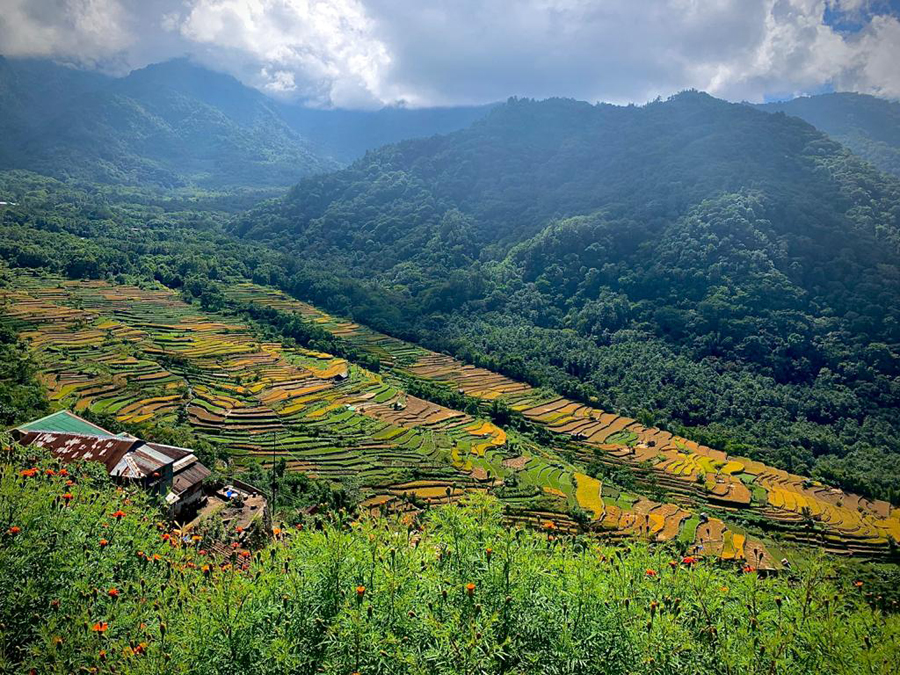
Khonoma Village
Khonoma, located about 20 km west of Kohima, is renowned as India’s first green village and is often called Asia’s first green village as well. The government inaugurated and formally declared Khonoma the country’s first green village in 2005.
Khonoma is named after Khwüno, a small plant that grows in abundance around the village. The village is also famous for its master craftsmen in the art of bamboo and cane weaving. Apart from that, Khonoma is also known for its initiatives in wildlife conservation.
In 1998, the Khonoma Nature Conservation and Tragopan Sanctuary was set up to protect the endangered Blyth’s Tragopan and other wildlife and rare plant species in their natural habitat. Over the last two decades, bird enthusiasts from far and wide have come to Khonoma just to spend their days listening to the calls of the birds and watching them.
Khonoma’s landscape is exceptionally stunning, marked by its cascading terraced fields and lush forests that create a dramatic and picturesque setting. The village is stationed on hilly terrain, with slopes ranging from gentle to steep and rugged, all covered in dense, verdant forest rich in diverse plant and animal life.
The best time to visit Khonoma village is from October to April. During this period, the weather is generally pleasant and conducive to exploring the village and its surrounding areas and engaging in outdoor activities.
District: Kohima
Highlights: India’s first green village (declared 2005), named after the local “Khwüno” plant; famed for bamboo/cane crafts, terraced fields, forest biodiversity, and birdlife.
Distance from Dimapur Airport: ~80 km
Route: Dimapur → Kohima → winding uphill road west into Khonoma via state highway or taxi/bus.
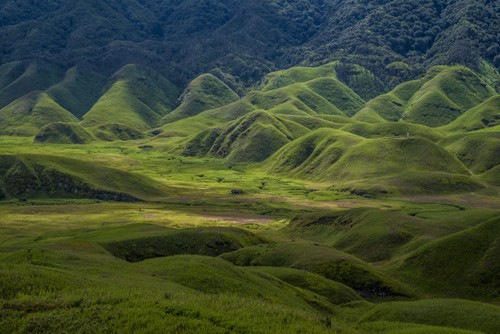
Dzukou Valley
Dzukou Valley, straddling the border of Nagaland and Manipur, is renowned for its breathtaking hills and unique topography, with sweeping treeless knolls, river-cut ravines, meandering streams, and deep caves, all set at about 2,452 metres.
The valley’s intricate folds and contours, shaped over millennia, create a visual spectacle. The valley is famous for its rolling hills, lush green carpets, and the serpentine stream of cold water. It is also often called the Valley of Flowers, especially between July and September, when lilies and rhododendrons bloom.
The delicate ecosystem, with its mix of wildflowers, bamboo, and native trees, is both ecologically significant and visually enchanting.
District: Kohima
Highlights: Alpine valley at ~2,452 m, famed for rolling hills, wildflowers (July–Sept.), rhododendrons, serpentine streams, and ravines.
Distance from Dimapur Airport: ~95 km
Route: Dimapur → Kohima → Viswema or Jakhama → trek 7–8 km into the valley
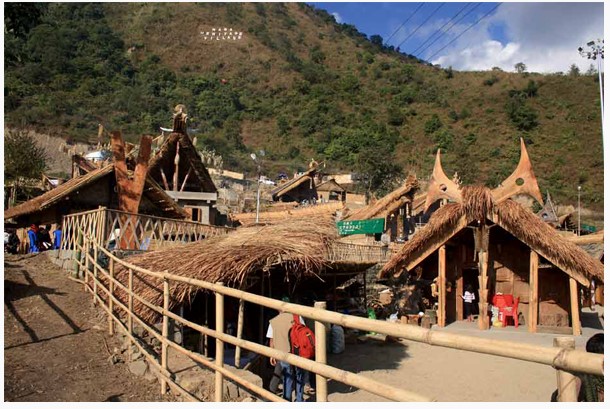
Naga Heritage Village (Kisama)
It was established to preserve and showcase the rich and diverse cultural heritage of Nagaland tribes. The name Kisama is derived from two neighbouring villages, Kigwema (Ki) and Phesama (Sa), with ‘ma’ denoting village, as it is located on land shared by both villages.
The village lies about 10–12 kilometres south of Kohima, the state capital. It was built with the aim of providing visitors with a glimpse of the cultural diversity of Nagaland on a single stage.
Kisama was designed in the form of an archetypal Naga village with a modern edge. It is set up as a mini-village with grand ceremonial gates, housing arenas and amphitheatres, as well as massive indoor shopping areas.
The heritage complex consists of sixteen dormitories or morungs, one for each tribe of Nagaland. Interestingly, the representatives of tribal groups are organised within the complex in accordance with their geographic location within the state. The morungs are erected in the traditional architectural style and are adorned with symbols of significance to the tribes, such as weapons like spears, wooden figurines of humans and animals, and even Naga log drums.
Besides the morungs, the heritage village also comprises a World War II museum, Bamboo Heritage Hall and pavilion, food courts, and a stadium for live concerts.
Since 2003, during the first ten days of December, the village has hosted the annual Hornbill Festival.
District: Kohima
Highlights: Living museum with 16 tribal morungs, WW II museum, Bamboo Heritage Hall, amphitheatre, shopping courts; venue of the Hornbill Festival (Dec. 1–10).
Distance from Dimapur Airport: ~86 km
Route: Dimapur → Kohima by taxi/shared vehicle → short onwards drive to Kisama.
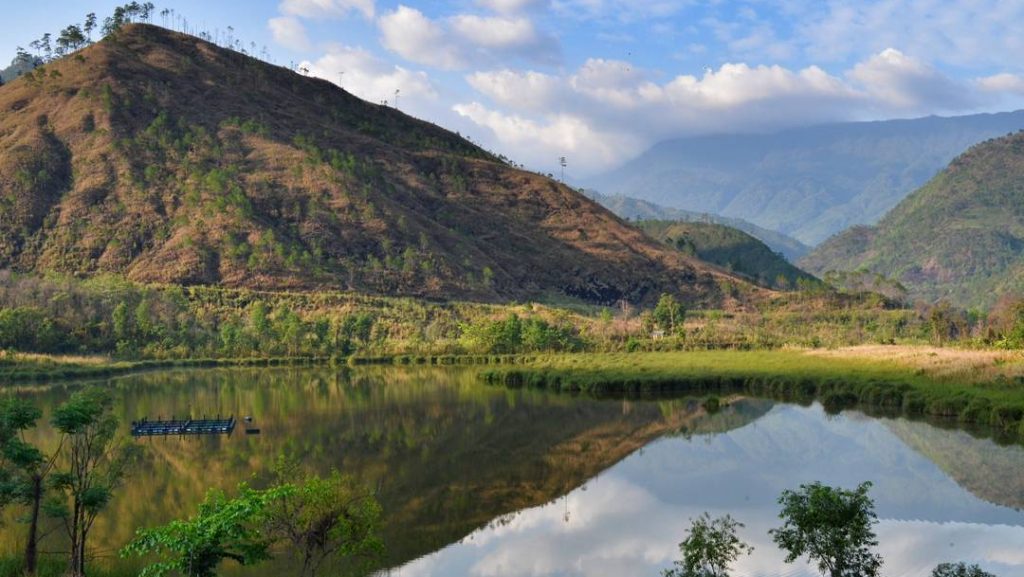
Shilloi Lake
Shilloi Lake, Nagaland’s largest natural lake, located in Lutsami village of the Meluri district, is called the queen of Nagaland’s lakes primarily due to the local legend that a mystical baby, believed to be a queen, resides in the lake and is protected by spirits.
According to the folktale, villagers once saw a baby floating in the lake, supported by two hands. The baby is said to be the reigning queen of the lake, and the spirits are considered her guardians.
The lake is about 450 metres long and 270 metres wide, with a maximum depth of around 4 metres. Its shape resembles a giant human footprint, which adds to its unique charm. The lake is a hotspot for birdwatching, especially for migratory birds like Siberian cranes, and is known for fishing during the June to September season.
Visitors can enjoy boating and fishing and stay at guest houses nearby to experience local hospitality. Shilloi Lake is a must-visit destination for anyone who loves nature, adventure, and culture.
District: Meluri
Highlights: 450 × 270 m “footprint-shaped” lake, ~4 m deep; legend of a “lake queen”, boating, fishing June–Sept., birdwatching (waterfowl).
Distance from Dimapur Airport: ~240 km
Route: Dimapur → Kohima → Phek → Meluri → Shilloi
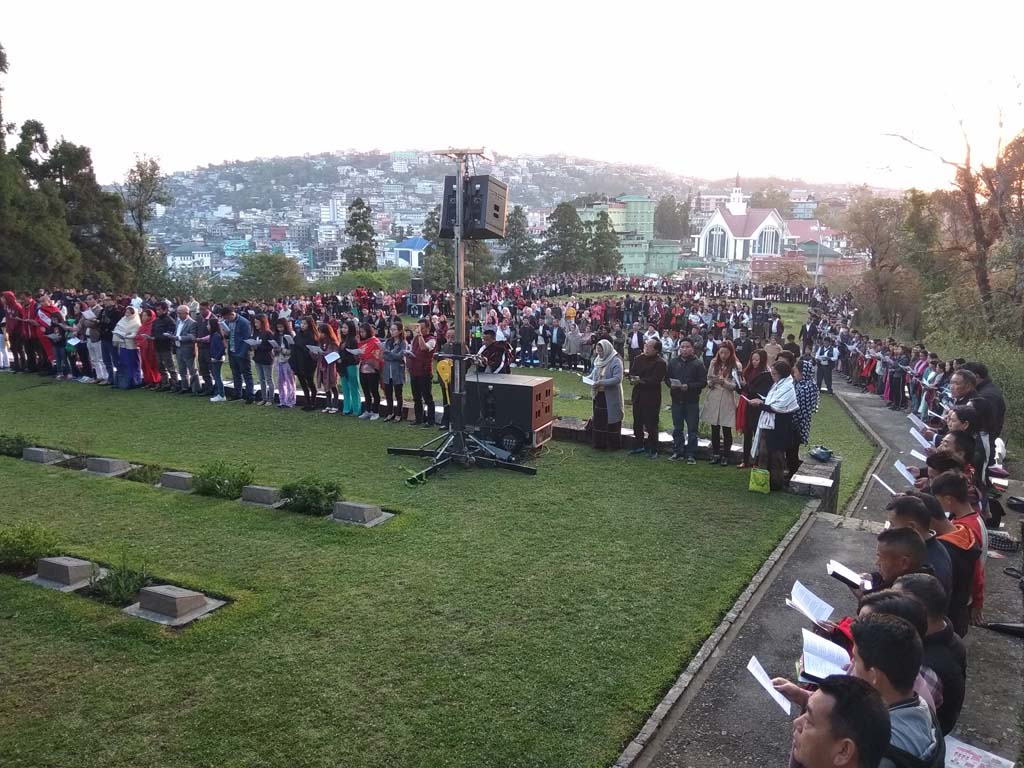
Kohima War Cemetery
The Kohima War Cemetery commemorates the soldiers of the Allied forces (notably those of the British 2nd Division) who died in the Battle of Kohima, a decisive confrontation between British and Indian troops and the Japanese army.
The battle was part of a large campaign to prevent the Japanese advance into India from Burma (now Myanmar). The cemetery contains 1,420 graves of Commonwealth soldiers and a memorial to 917 Hindu and Sikh soldiers who were cremated according to their faith.
The cemetery is the final resting place for soldiers of various nationalities, languages, and faiths—primarily from the British Commonwealth, including Indian, British, African, and other contingents. Headstones are inscribed with each soldier’s name, rank, regiment, date of death, and religious symbol, ensuring individual recognition and respect for diverse beliefs.
The cemetery has gained international recognition as one of the world’s top war memorials, attracting visitors globally and serving as a site for education and reflection on the universal values of valour and peace.
The iconic epitaph at the entrance, “When you go home, tell them of us and say: For your tomorrow, we gave our today,” encapsulates the spirit of selflessness and bravery that transcended national and cultural boundaries during the battle.
District: Kohima
Highlights: Memorial for ~1,420 Commonwealth graves and a memorial for ~917 Hindu/Sikh soldiers from the Battle of Kohima (1944); features iconic epitaph.
Distance from Dimapur Airport: ~63–65 km
Route: Dimapur → Kohima → cemetery located just off Imphal–Dimapur road within Kohima.
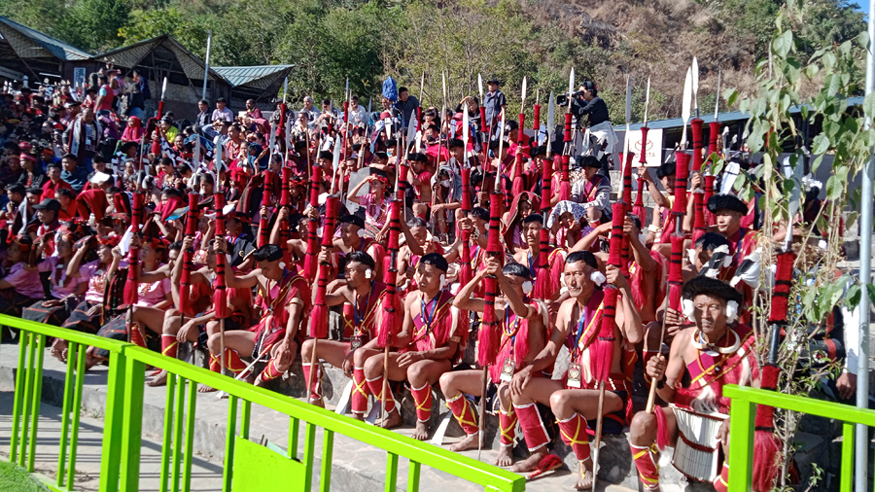
Hornbill Festival
The Hornbill Festival is the most prominent and celebrated cultural event in Nagaland, often referred to as the “festival of festivals”. It is held annually from December 1 to 10 at the Naga Heritage Village.
The Hornbill Festival was first organised in 2000 by the government of Nagaland to promote local tribal interaction and to revive and protect the traditional Naga culture. It was named after the Indian hornbill bird, which is highly respected and revered in Naga history and traditions. The festival’s major goal is to promote community understanding and cultural exchange among the many Naga tribes.
At the Hornbill Festival, visitors may see a variety of cultural performances, such as traditional dances, folk songs, and tribal games. There are also exhibitions of indigenous handicrafts, textiles, and traditional Naga cuisines.
In addition, it organises a variety of sporting activities and tournaments, including traditional archery, wrestling, and indigenous games. The festival features musical performances by Naga artists and bands. It is an opportunity to enjoy a diverse range of music styles, from traditional Naga tunes to contemporary genres.
Traditional arts are also featured, with paintings, wood carvings, and sculptures by modern Naga artists on display. Naga troupes sing folk songs, perform traditional dances, and play indigenous games and sports.
District: Kohima
Highlights: Nagaland’s biggest cultural event, called the “festival of festivals”, held annually from December 1 to 10 at Naga Heritage Village (Kisama).
Distance from Dimapur Airport: ~86 km
Route: Dimapur → Kohima → continue ~12 km south on Kohima–Imphal Road to Kisama Heritage Village.
-1752851160611.jpg)
(The writer is a student of Journalism and Mass Communication at Nagaland University. He is currently an intern at Eastern Mirror.)